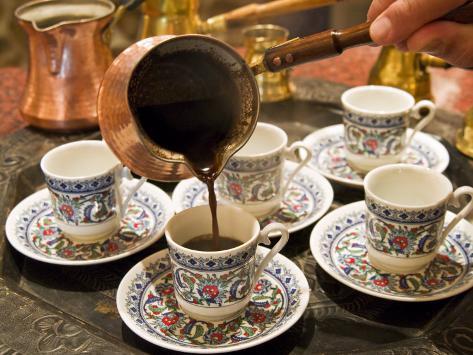- Coffee is essential to hospitality as it is in all Middle Eastern countries. It is the traditional sign of welcome.
- The fine lamb and mutton raised in the Middle East is the favorite meat of the people.
- Milk from cows or goats is usually converted to laban (yoghurt), or made into the cream cheese, labneh.
- The main cereals are rice and cracked wheat, called burghul.
- The Lebanese like to use their own fresh olive oil, or a clarified butter called samneh. The Turks use olive oil, vegetable shortening or butter, while in Saudi Arabia the preferred fat is ghee, usually obtained from goat or sheep milk.
- Arranged marriages are very common in the Arab world because the traditions of Arab culture and Islam forbid couples to have sex before marriage, so when it is time for a young man to get married, his family will look around to identify a number of potential brides such as the girls' physical beauty, her behaviour, her cleanliness, her conduct in front of elders, her education, her religious education(whether or not she has completed the memorization of the Quran), and finally her qualities as a housewife.
- The bride's family hosts a reception in their home, where the groom formally asks for the bride's hand in marriage from her father or the eldest man in the family. After the father agrees, the families read the Fatiha and drink sharbat, a sweet cordial prepared from flowers or fruit.
- Engagements are in the Arab world are usually much like wedding parties, with the difference that the bride wears any dress she pleases. Usually, the bride and groom dress in matching colors. They exchange rings, putting the rings on each other's right-hand ring finger.
- bellydance is a Western-coined name for "solo, improvised dances
based on torso articulation" originating from the Middle East, especially raqs sharqi.

- Belly dance in the Middle East has two distinct social contexts: As a folk or social dance, and as a performance art.
Source:
- http://almashriq.hiof.no/general/600/640/641/khayat/introduction.html
- http://en.wikipedia.org/wiki/Arab_wedding
- http://en.wikipedia.org/wiki/Belly_dance


Culture our the heritage and recognition. Check out beauti tips in urdu for skin whitening
ReplyDeletenice one : check out Hand And Feet Whitening Tips
ReplyDelete